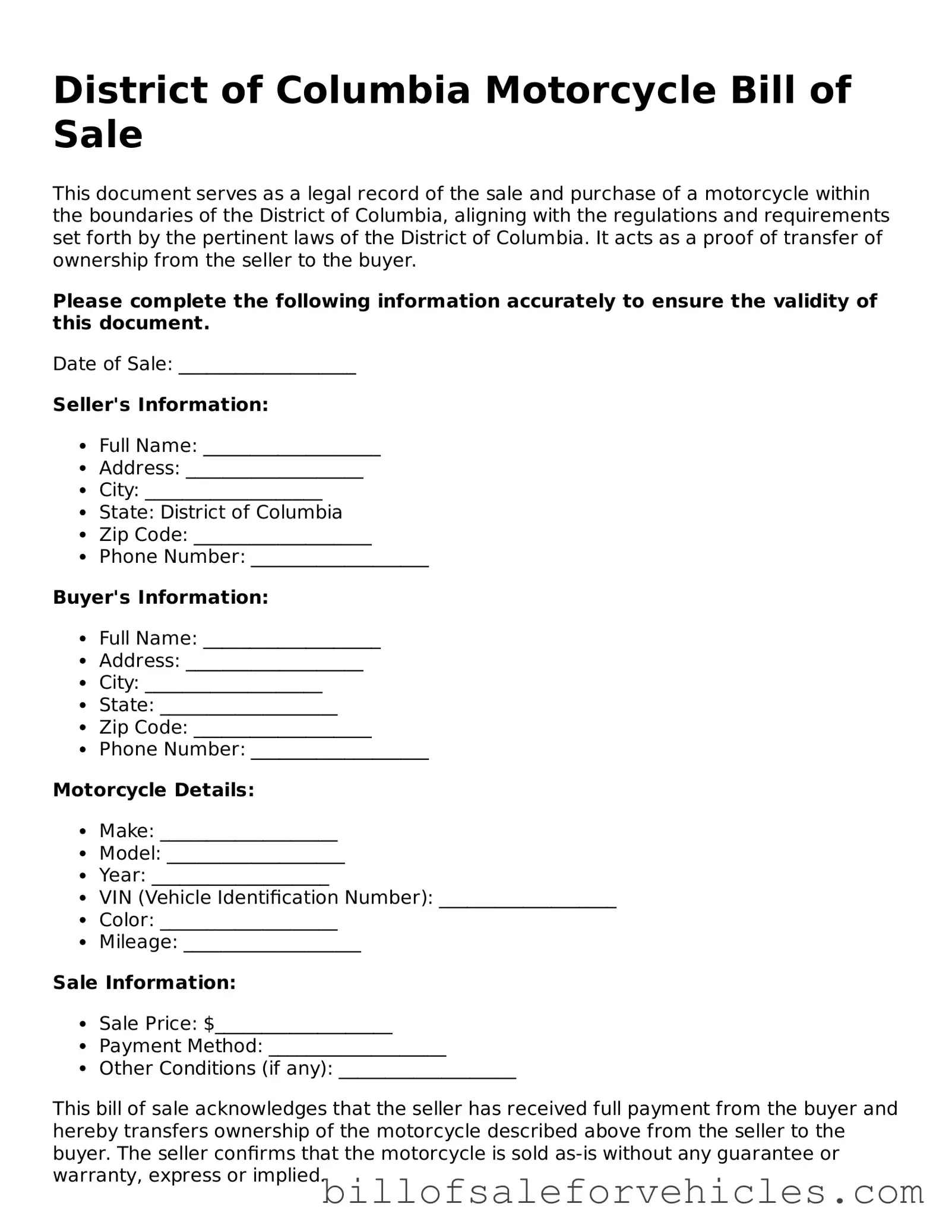What is a District of Columbia Motorcycle Bill of Sale form?
A District of Columbia Motorcycle Bill of Sale form is a legal document that records the sale and transfer of ownership of a motorcycle from a seller to a buyer within the District of Columbia. It includes important information such as the make, model, year, and VIN of the motorcycle, as well as the names and signatures of both parties involved in the transaction. This document serves as proof of purchase and is necessary for the buyer to register the motorcycle in their name.
Do I need to notarize the Motorcycle Bill of Sale form in the District of Columbia?
No, the District of Columbia does not require the Motorcycle Bill of Sale form to be notarized. However, having it notarized can add an extra layer of authenticity and protection for both the buyer and the seller. It is a simple process where both parties sign the document in front of a notary public, who then certifies it.
What information is required in the Motorcycle Bill of Sale form?
The Motorcycle Bill of Sale form should include the seller's and buyer's full names and addresses, the motorcycle's make, model, year, VIN, and odometer reading at the time of sale, the purchase price, and the date of sale. Both the buyer and the seller should sign and date the form to validate it. It may also include terms of the sale, such as a description of the motorcycle's condition or any warranties being transferred.
Can I use a generic Bill of Sale form for a motorcycle transaction in the District of Columbia?
Yes, you can use a generic Bill of Sale form for motorcycle transactions in the District of Columbia, as long as it contains all required information. Make sure the form includes details specific to the motorcycle being sold and that both parties sign and date it. Using a detailed and specific form helps ensure that all aspects of the sale are clearly recorded and can prevent potential disputes in the future.
What should I do after completing the Motorcycle Bill of Sale form?
After completing the Motorcycle Bill of Sale form, both the buyer and the seller should keep a copy for their records. The buyer will need to present this form as part of the required documents when registering the motorcycle in their name. It's also recommended to report the sale to the District of Columbia's motor vehicle department to officially transfer the title and remove the seller's liability for the motorcycle.
